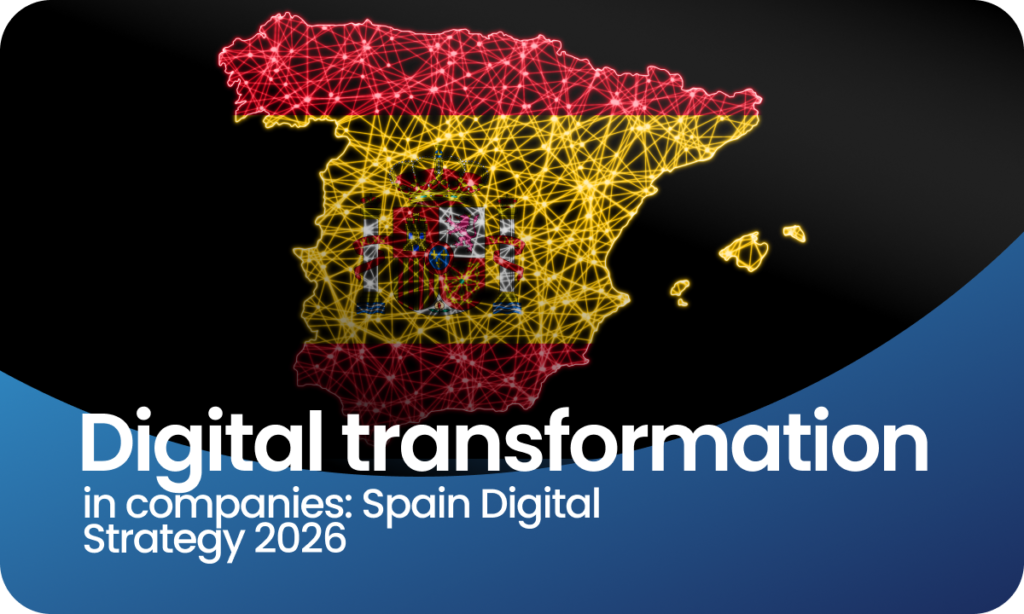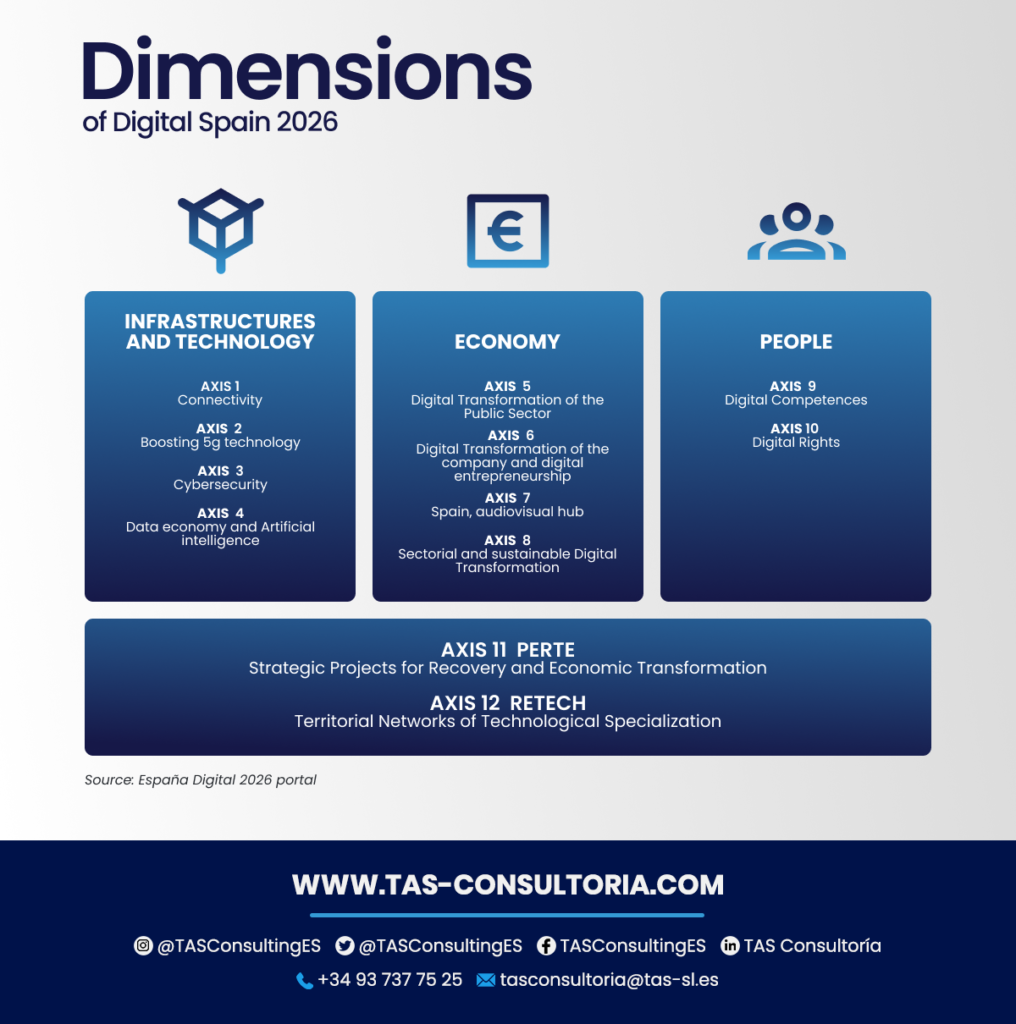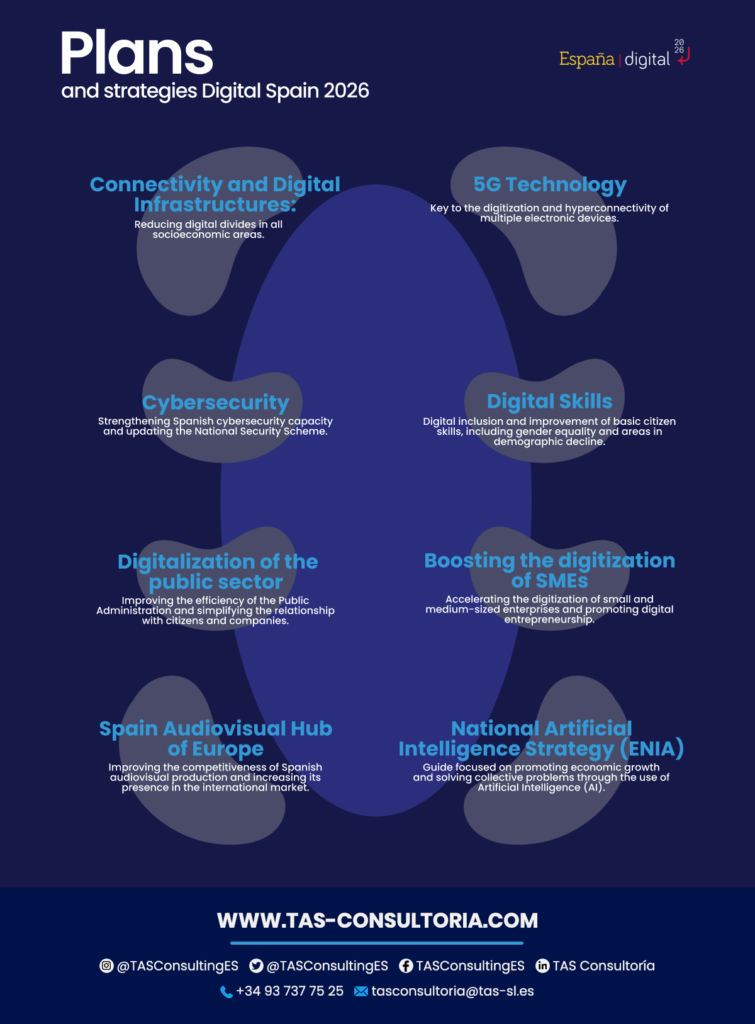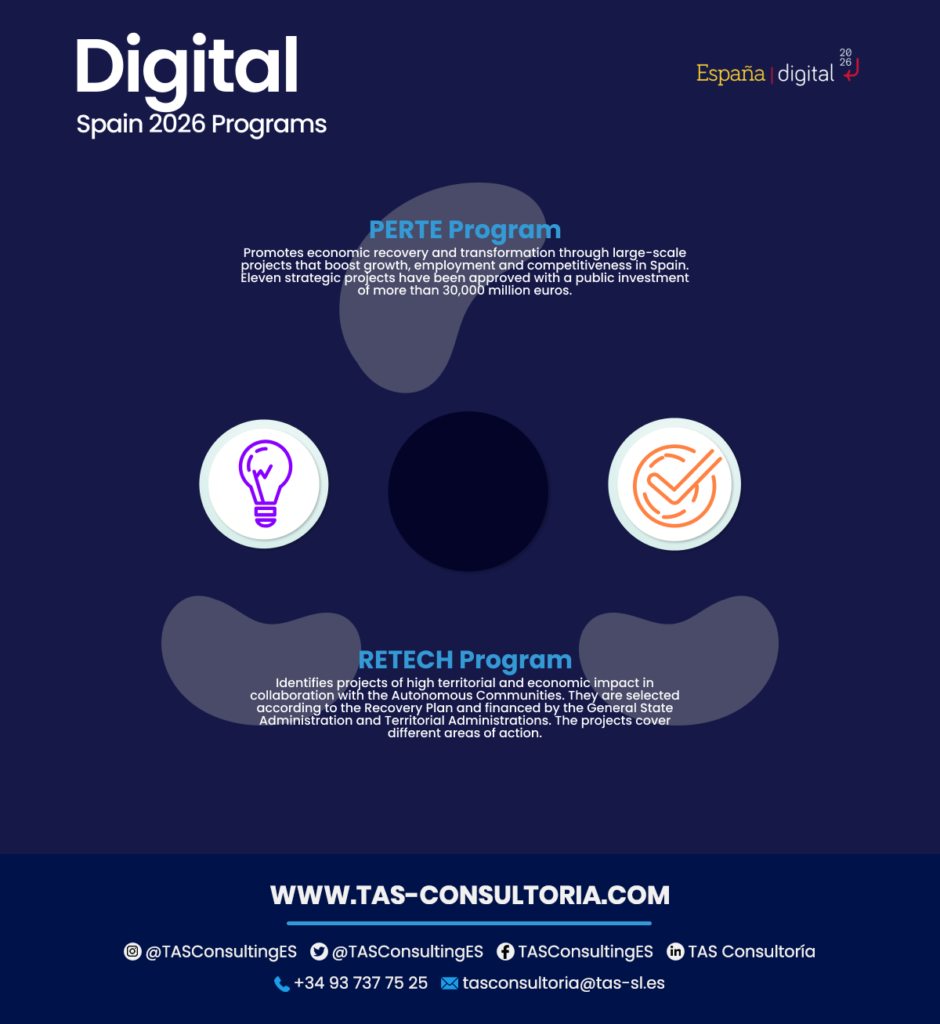
The digital transformation of companies is a vital process for adapting to the demands of today’s market. With the new Spain Digital Agenda 2026, the Spanish government seeks to promote the modernization and digitization of companies in the country. Would you like to learn more about the Spain Digital Agenda 2026 and how it will boost the digitalization of companies? Then this article is for you!
What is the Digital Spain Strategy 2026?
The Digital Spain Strategy 2026 is a Spanish government plan that seeks to drive digital transformation in companies and the country in the coming years. All this with the aim of improving competitiveness, economic growth and the welfare of Spanish society.
The strategy includes several areas of action, such as the development of digital infrastructures, the promotion of innovation and entrepreneurship, the improvement of digital skills and training, the digitization of public administration and the improvement of cybersecurity, among other issues.
In order to achieve these objectives, a collaboration framework has been established with different economic, social and technological actors in the country. All with the aim of working in a coordinated manner to achieve an effective and sustainable digital transformation.
The update of the strategy launched in July 2020 is part of Spain’s Recovery Plan and eight specific plans for its implementation have been published.
In addition, important investment programs have been launched at the national, regional and local levels for the digitalization of companies. As a result, significant progress has been made in the structural reforms necessary for the success of the strategy.
Also of interest: Spain’s crisis from a different point of view
Key dimensions of the Digital Spain Agenda 2026
The Digital Spain 2026 initiative operates in three fundamental dimensions: infrastructure and technology, economy and people.
Its agenda is made up of the ten strategic axes that were established in its original version, together with two new transversal axes that seek to promote high-impact projects through collaboration between the public and private sectors, as well as shared governance between the State and the Autonomous Communities.
In the following summary we mention the keys to the Digital Spain 2026 strategy, get to know them!

1. Key technology and infrastructure
- Digital connectivity for all: the objective is to ensure that the entire population has access to adequate digital connectivity, reducing the gap between urban and rural areas, in order to guarantee 100% coverage with speeds of 100 Mbps by 2025.
- Promotion of 5G Technology: Spain will continue to lead the implementation of 5G technology in Europe, encouraging its contribution to improving economic productivity, social progress and territorial unification. The goal has been set to have 100% of the radio spectrum ready for 5G by 2026.
- Improving cybersecurity: By 2026, the aim is to increase Spain’s IT protection skills, boost the growth of the business sector in this field (industry, research, development and innovation R&D&I, and talent) and strengthen the country’s international dominance in cybersecurity.
- Data Economy and Artificial Intelligence: the objective of the Digital Spain Agenda 2026 is to move towards a data-driven economy that guarantees security and privacy, and to take advantage of the opportunities offered by Artificial Intelligence. It has set as a goal that, within five years, at least 25% of companies use Artificial Intelligence and Big Data.
2. Economic measures
- Modernization of the public sector through digital transformation: With the aim of promoting the digitalization of public administrations, technological infrastructures in key areas such as employment, justice and social policies will be updated.
Progress will continue to be made in the digital transformation of the public sector towards the year 2026, focusing on the modernization of the General State Administration, Autonomous Communities and Local Entities through innovative projects.
- Digital transformation in companies and promotion of technological entrepreneurship: the challenge until 2026 is to accelerate the process of digitalization of companies, paying special attention to SMEs, micro-SMEs and start-ups. The idea is to create a favorable environment for the emergence and consolidation of emerging technology-based companies.
- Sustainable digital transformation by sector: Digital Spain 2025 proposed initiatives to promote digital transformation in companies in strategic sectors such as agri-food, health, mobility, tourism and commerce.
The progress achieved has had a very positive impact. Precisely, the goal for 2026 is to accelerate the green and digital transition through the PERTEs, thus consolidating structural, sustainable and lasting transformations in the economy.
- Spain, European audiovisual center: the challenge for 2026 is to increase Spain’s attractiveness as a European platform for investment, work and business in the audiovisual industry, driving growth in different subsectors.
It will also seek to promote digital transformation in audiovisual production companies with environmental sustainability and consolidate public-private collaboration.
3. Citizenship
By 2026, one of the main challenges will be to strengthen the digital skills of both workers and the population in general, in order to reduce existing digital divides. In other words, it will not only be based on digital transformation in companies.
To mention a few, the digital transformation in education must be completed and training in digital skills must be guaranteed. In this way, the number of information technology specialists in the Spanish economy can be increased. In this way, gender equity will be achieved in this group.
The protection of rights in the digital sphere is a priority that involves workers, consumers, citizens and companies. In this context, the Digital Bill of Rights, endorsed in July 2021, sets out a plan for digitalization that takes into account the human being, which is why it has become a significant starting point.
Its objective is to guarantee the protection of labor, consumer, citizen and business rights in the new digital environment.
You may also be interested in: Digital Spain 2025: Basic Guide
What are the projects and strategic plans on which the Spain Digital Agenda 2026 is based?
Our government has developed an ambitious digital agenda that aims to drive digital transformation in companies and in the rest of the country. These measures focus on reducing socioeconomic, gender, generational, territorial and environmental gaps.
The Digital Spain 2026 program includes various strategies and plans to achieve a more connected and digitized society. Below, we summarize what it should cover:

In the following material, you will see the main points of each of these plans and strategies:

The implementation of the Digital Spain Agenda is an absolute necessity for those who wish to remain competitive in today’s market. This strategy offers Spanish companies a guide to achieve this transformation and adapt to the demands of the future.
You may also be interested in: Level of digitization of companies in Spain 2022
If your company has not yet started the digital transformation process or needs advice to move forward, do not hesitate to contact us at tasconsultoria@tas-sl.es.
Our team of digital transformation experts will help you boost your company’s growth and competitiveness in the digital environment. Contact us today and start your digitalization journey!




Your email address will not be published .
Required fields are marked with *